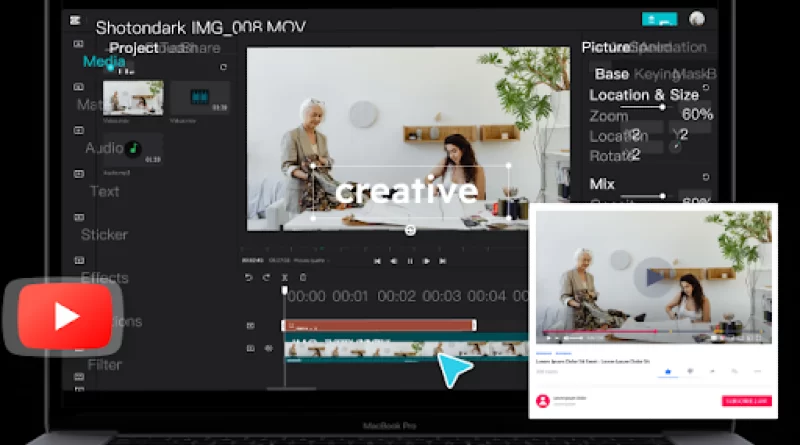Top 5 Reasons to Opt for Video in Special Education
As technology becomes increasingly advanced, it’s imperative to implore numerous opportunities to improve the interaction between students and teachers. Most especially, children with special needs should visually connect with learning. Let’sLet’s further discuss why educators need to opt for video in special education to improve learning among them seamlessly.
Special Education and Online Learning: Seeking Better Improvement
Special education practices educate students in a way that their differences, special needs, and disabilities are accommodated. It caters to the children’s emotional, cognitive impairment, or behavioral concerns. It also addresses the intellectual, vision, hearing, speech, or learning disabilities of the children concerned.
Educators and institutional bodies need to consider online learning methods to improve and accelerate the learning culture of special needs children. Fundamentally, videos allow children to learn better visually and interactively rather than steering into the book.
That’s why we list the top reasons to opt for online videos in special education. It becomes more advantageous when you implore the services of an outstanding free online video editor to craft high-quality and informative pieces.
Are Videos Important in Special Need Education?
Formal education allows students with special needs to realize their hidden potential. Modern technology offers students with disabilities the privilege of accessing educational videos as a tool to improve their learning process.
According to Statista, in 2022, online videos attained an audience reach of about 93% among other internet users globally. Today, abstract topics that are difficult to learn and comprehend are now more accessible and understandable, all thanks to effective educational video platforms for online learning.
Interestingly, short video clips allow for more effective learning and memory recall. The visual and auditory appeal of the video content synchronizes with special needs students and allows everyone to process information in a way that’s unique to them. This is one main reason educational institutions should implore online video technology in special education.
Creating Online Educational Videos with Ease

Although videos are proven to improve learning in special education, teachers and educators can feel overwhelmed crafting top-notch videos. As a result, many educational institutions employ professional online video creators/editors to provide enriching and captivating video content for their students.
Employing the service of CapCut’s free online video editor, you can easily create high-quality online educational video content pieces. Our rich features/resources improve teaching efficiency and motivate students to learn.
For instance, with our multifunctional video editor, you can convert text-to-speech, add captions, resize videos, add video effects and filters, etc. Our video background remover feature allows users to remove and replace the background of their video to align with your institution. This cutting-edge technology is great for producing high-quality videos that resonate with special needs students.
Top Reasons to Opt for Video in Special Education
No doubt, online videos are noteworthy for both students and educators. It provides a better learning atmosphere, among other benefits. Here are the top reasons teachers should opt for videos in educating special needs students.
#1 Improves Students’ Sensory Experience
Instead of the traditional learning method, videos offer visual stimulation to students, creating a bigger memory implant in their minds. Since they get to see and hear the lessons taught, they process them like everyday interactions.
Also, retaining information improves and helps students interact with the content easily. Video is a highly effective means of communicating practical concepts involving a step-by-step procedure to students. This learning method is particularly useful in children with processing deficits (difficulty in processing sensory information).
#2 Continuous Access to Live Classroom Recordings
Since the recorded videos of the classroom lectures are captured, students can always have access to them anytime and anywhere to remember what was taught during the lecture. This is helpful for students who have challenges remembering the lessons taught. They could easily fall back on the recorded videos for reminders.
#3 Videos Improve Knowledge Retention
Communicating lessons to students with ADHD (Attention Deficit Hyperactivity Disorder) using online videos improves their ability to grab and retain knowledge. Since the video can be replayed many times and reviewed when the children are most stable, they learn easily and at their pace, which helps them retain what has been taught.
#4 Video Improve Active Learning
Educational video content in the classroom positively impacts active learning. This is greatly beneficial for students with frequent challenges regarding attention spans, like those with ADHD (Attention Deficit Hyperactivity Disorder), CD (Conduct Disorder), ADD (Attention Deficit Disorder), etc.
Also, video reduces the cognitive load/information delivered to special needs students when done correctly.
#5 Video Provide Regularity and Routine
Several students with ASD (Autism Spectrum Disorder) find it difficult to break routines and patterns. For these students, adherence to routines can become obsessively and oppressively crucial. Moreso, reinforcing routines can be a powerful way of helping students welcome changes.
Exposing ASD students to videos, facilitators can provide a sense of regularity and routine in their lives, mostly when the videos contain recurring characters, creative elements, tone of voice, colors, etc.
In addition, videos can typically model how these students should behave in their environment when they get overwhelmed while still maintaining consistency using known characters, elements, colors, etc.
Educational Video Contents: Essential Ingredients to Contain

For educational video content to autistically support and emotionally support special needs students, it must contain the following essential ingredients.
- Be simple and concise
- Add effects and filters to the videos to make them stand out.
- Keep video lessons short and straightforward
- Use seasoned and familiar presenters/active voices
- Guided notes and questions should be included
- Videos should be accessible from home or anywhere the students might be
- Videos should provide clear signals
Conclusion
As we wrap up, it’s imperative to welcome video as an important component of both general and special education learning environments. Videos provide teachers with the opportunity to adopt an evidence-based teaching strategy. And with the reasons itemized above, you want to opt for the best online video editor – CapCut, to address all your concerns.

